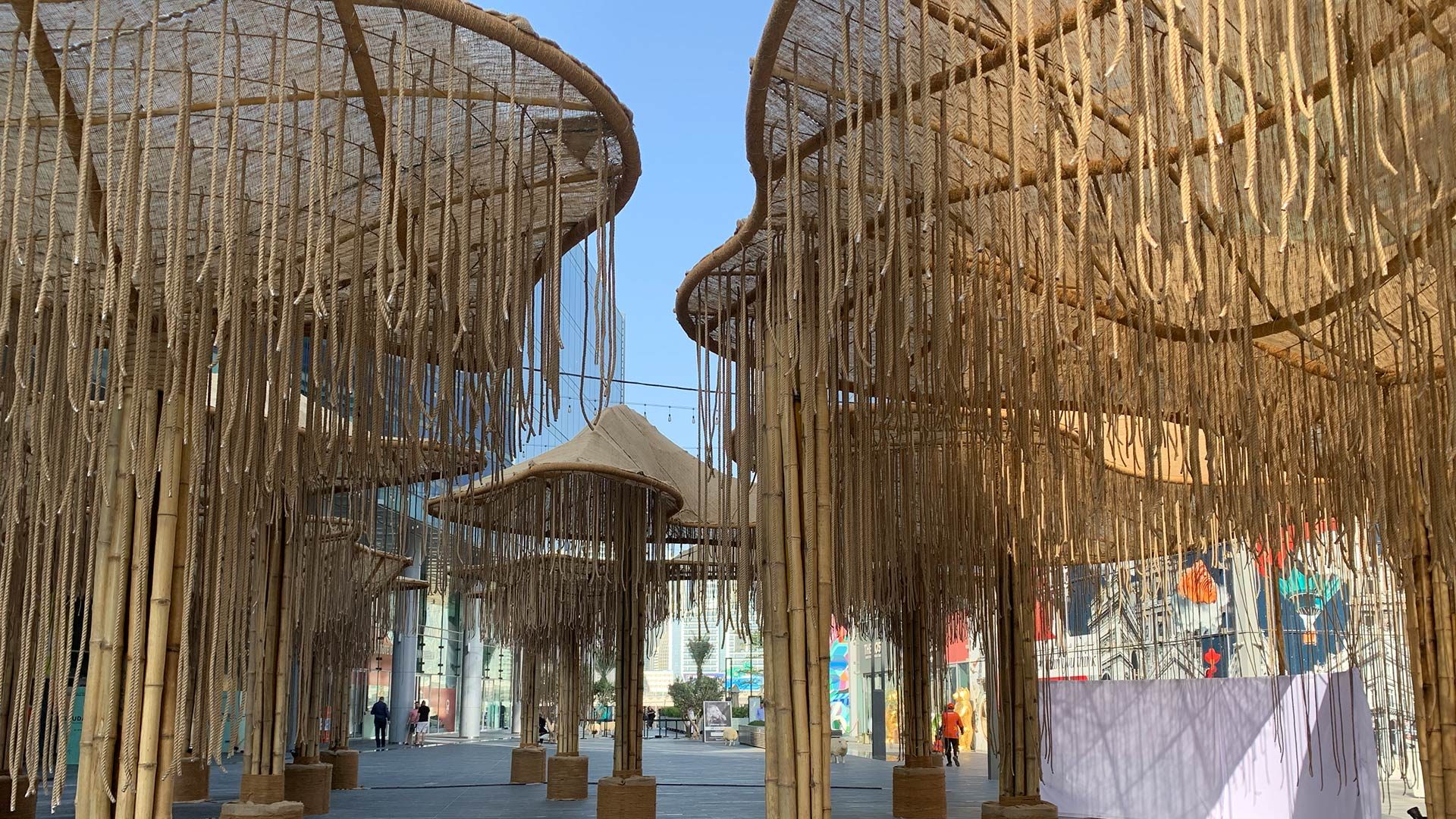DESIGN WITH IMPACT
Dubai Design Week returned for the eighth year with a range of exhibitions, workshops and panel discussions, set in Dubai’s Design District (d3). This year was bigger and better than ever with over 360 brands, designers, architects and studios in attendance.
The focus of Design Week is to showcase the ever-changing design field, promote discussion and collaboration surrounding the latest trends, highlight Dubai’s commitment to design and most importantly, inspire all manner of designers. This year I noticed a clear focus on themes of sustainability, renewable materials, and the circular economy throughout.
Designers from all fields came together to create a series of inspiring installations centred around the theme ‘DESIGN WITH IMPACT’. From a lighting perspective, I was impressed by the clear thought surrounding the transformation of the area from day to night. Whilst the installations were flooded with light during the day, they also came alive in the evening, with an emphasis on artificial lighting being utilised to create an immersive and exiting evening experience for everyone, designer or not.
Here are just a few highlights and some of my favourite installations, exhibitions and stands from the week.
The largest installation of the show and probably the most ‘Instagrammable’ was Once Upon a Forest by OBMI.
The structure represents an exploration of the indigenous forest ecosystem, celebrating protection and promise of the natural environment. As you enter the organic structure, you’re surrounded by belts of suspended rope, strips of jute fabric and bamboo struts.
A translucent layer of jute fabric covers of the structure, allowing daylight to penetrate softly and playfully through to the ground below, bouncing off the woven layers and textures of the fabric that suspend between. At night, illumination works in reverse. A combination of lines of lighting integrated in the floor and uplights emitting from the bamboo columns, mixed with the existing festoon lighting, subtly wash the installation, creating an alluring nighttime atmosphere.
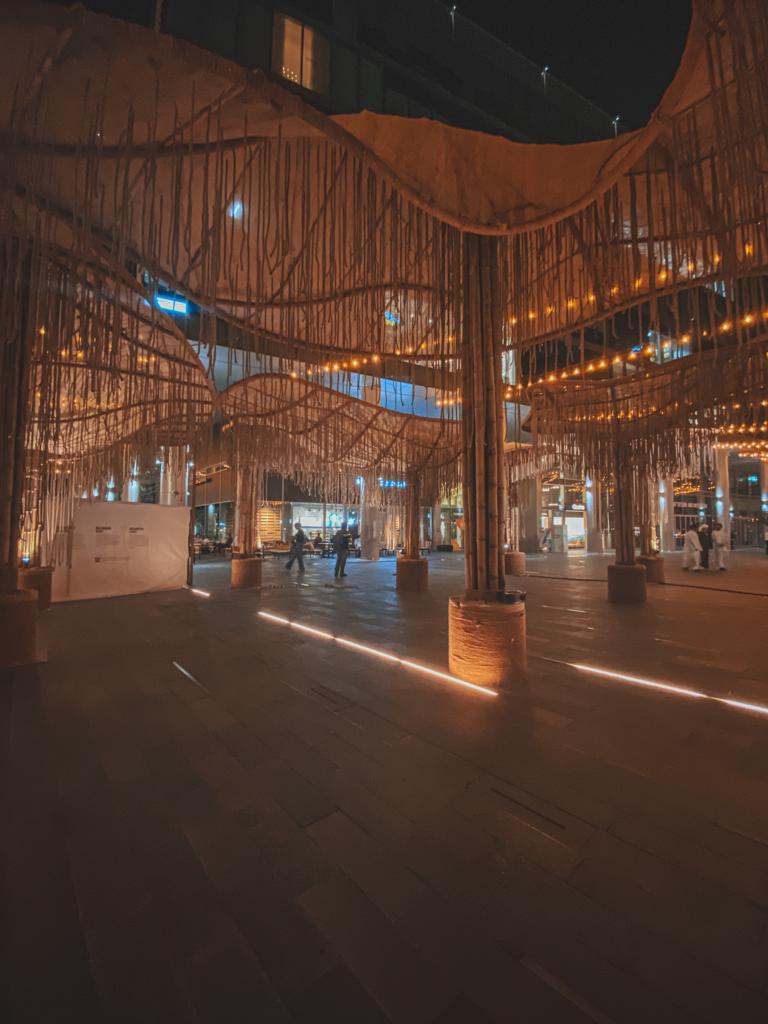
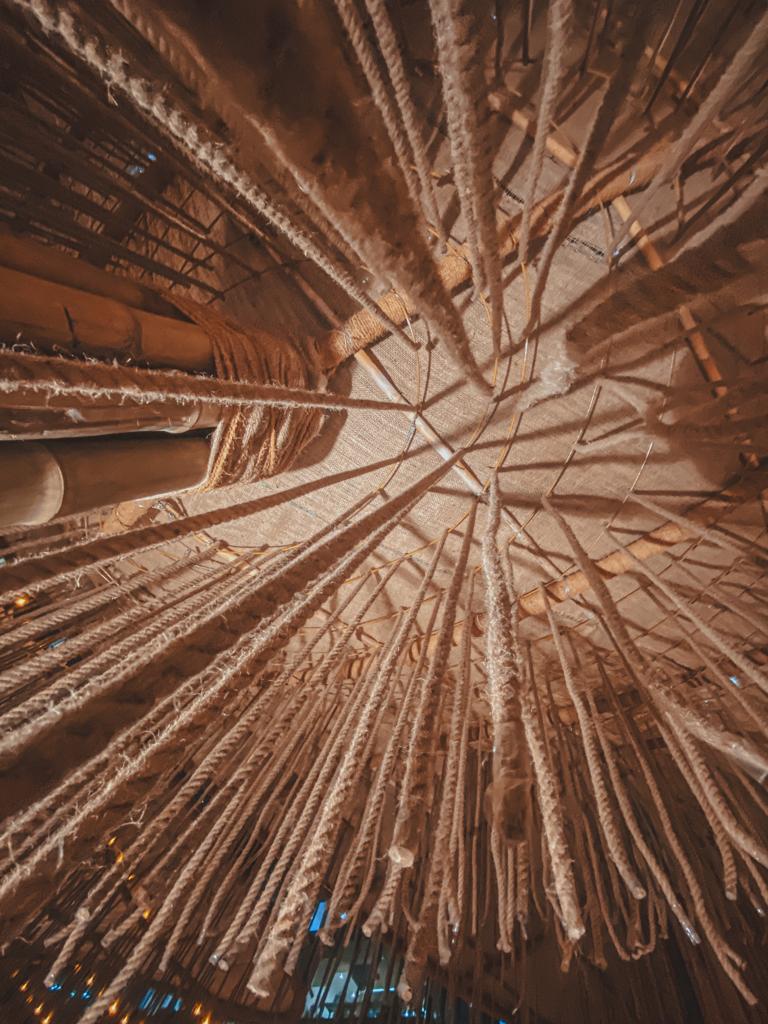
Bahrani architect Sara Alrayyes made her Dubai Design Week debut with her installation Al-Gargoor. The name Gargoor refers to the dome shaped fishing nets traditionally used in Bahrain; the mesh is supported by a metal frame that forms the spacious pods. The design is to celebrate Bahraini fishing heritage, this mode of fishing is slowly being phased out, with many Gargoor being discarded and left to pile up on local beaches. Alrayyes has taken these Gargoor and up-cycled them to create comfortable seating areas with the aim to highlight the importance of a circular economy. Her intention is to educate the next generation about the importance of the fishing culture of Bahrain as well as the importance of sustainable methods in fishing, as well as design
The Gargoors and internal seating zones, when bathed in daylight, cast delicate shadows on the concrete flooring. Subtle illumination at the base of each dome gently wash the net walls and emit warm hues at night – embracing visitors as they take a seat inside each pod. To create focus during the evening, woven pendants hang to provide a welcoming atmosphere, glowing from within with a warm colour temperature. The transparency of the fishing nets provide an interesting contrast with the colourful and intricate pieces of fabric showcased inside – enticing visitors to enter and explore.
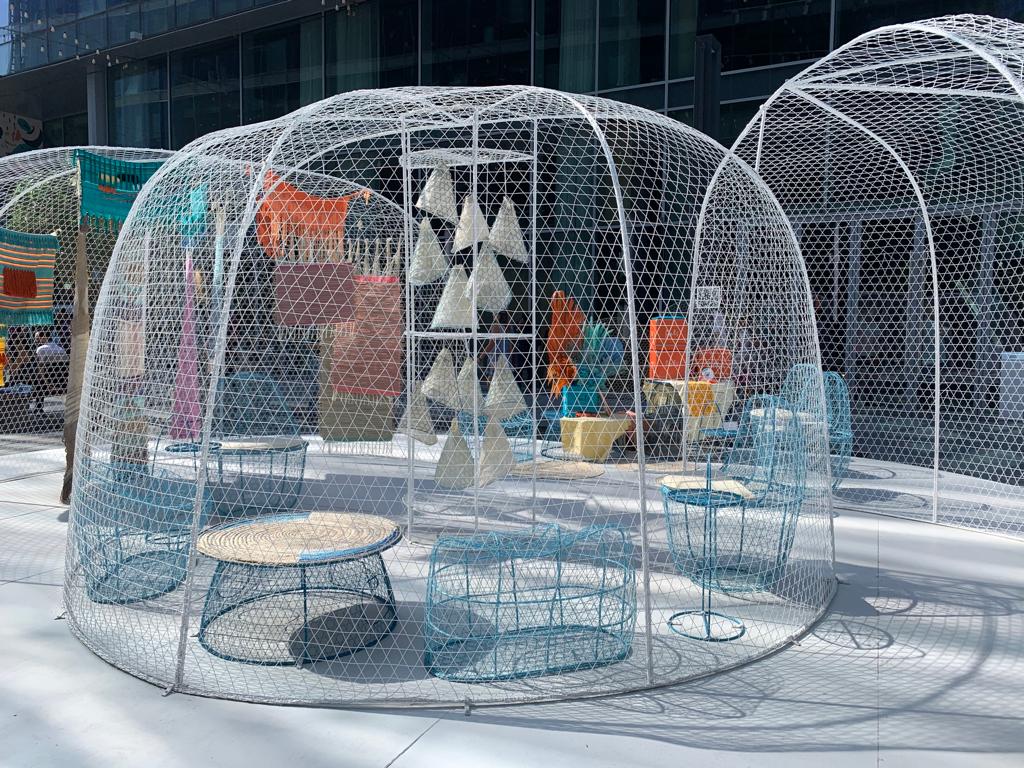
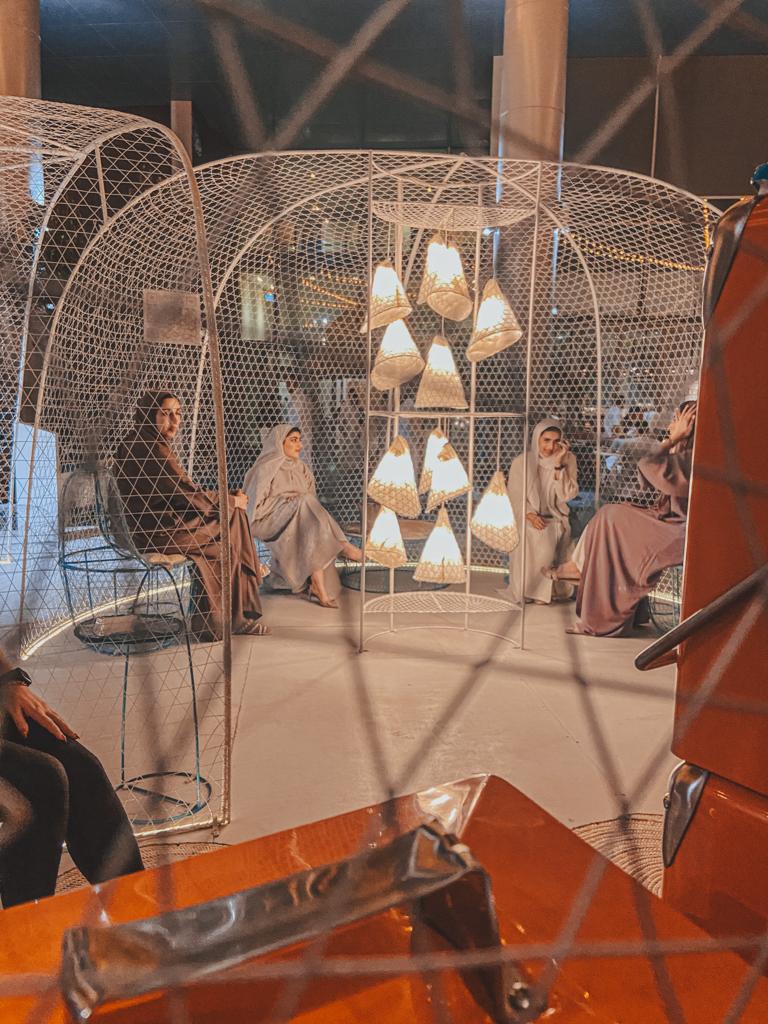
Moser
Moser had a fantastic stand at Downtown Design’s fair along the d3 Waterfront Terrace. The beautiful hand-crafted glass pieces were displayed along an uplit shelf against a pure white background, allowing the colours and textures of the glass vases to pop. I was lucky enough to see a glass vase being hand-crafted, the artist was etching the face of a live falcon on display – a bird deeply rooted in Dubai’s history, and regarded as cultural icons throughout the UAE.
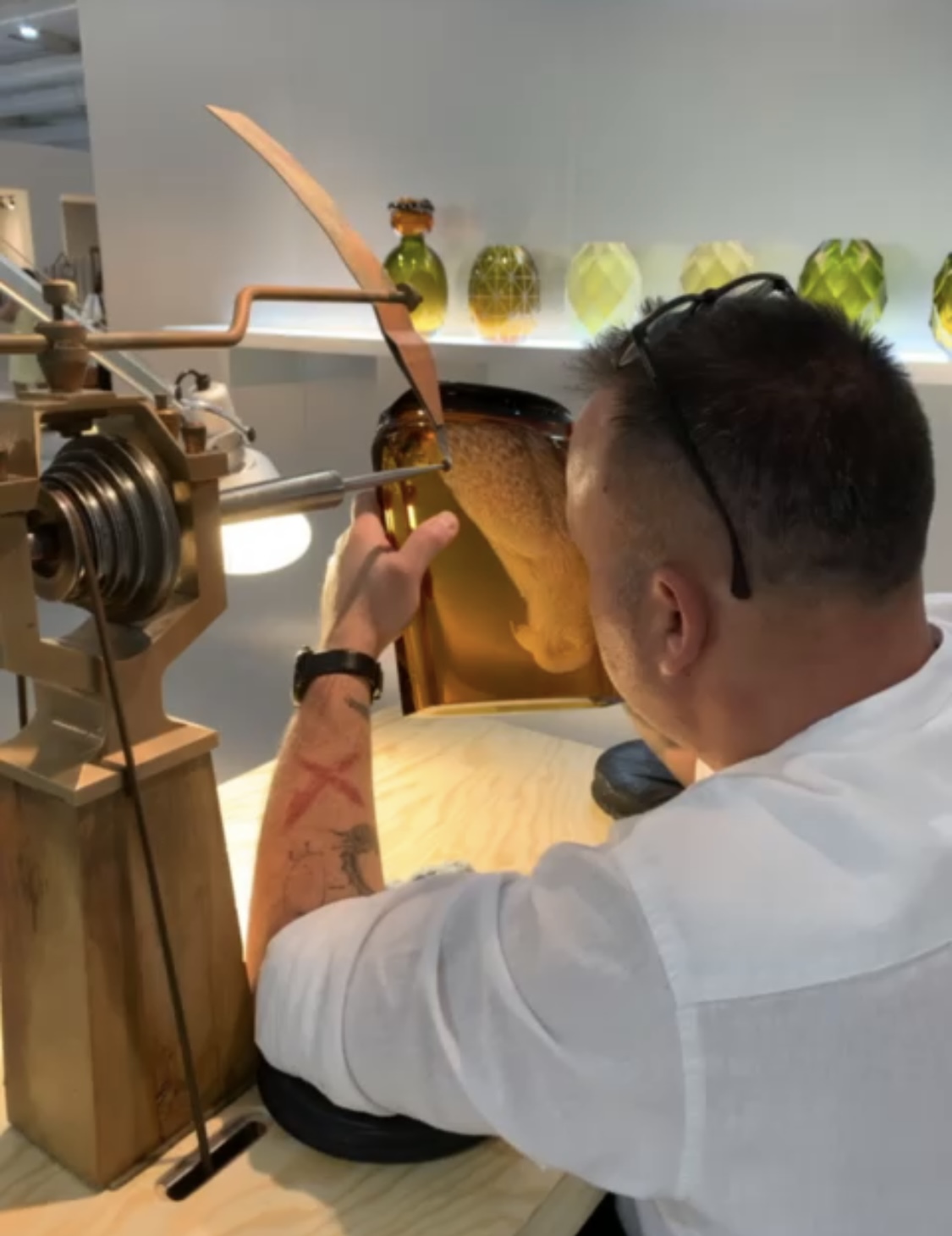
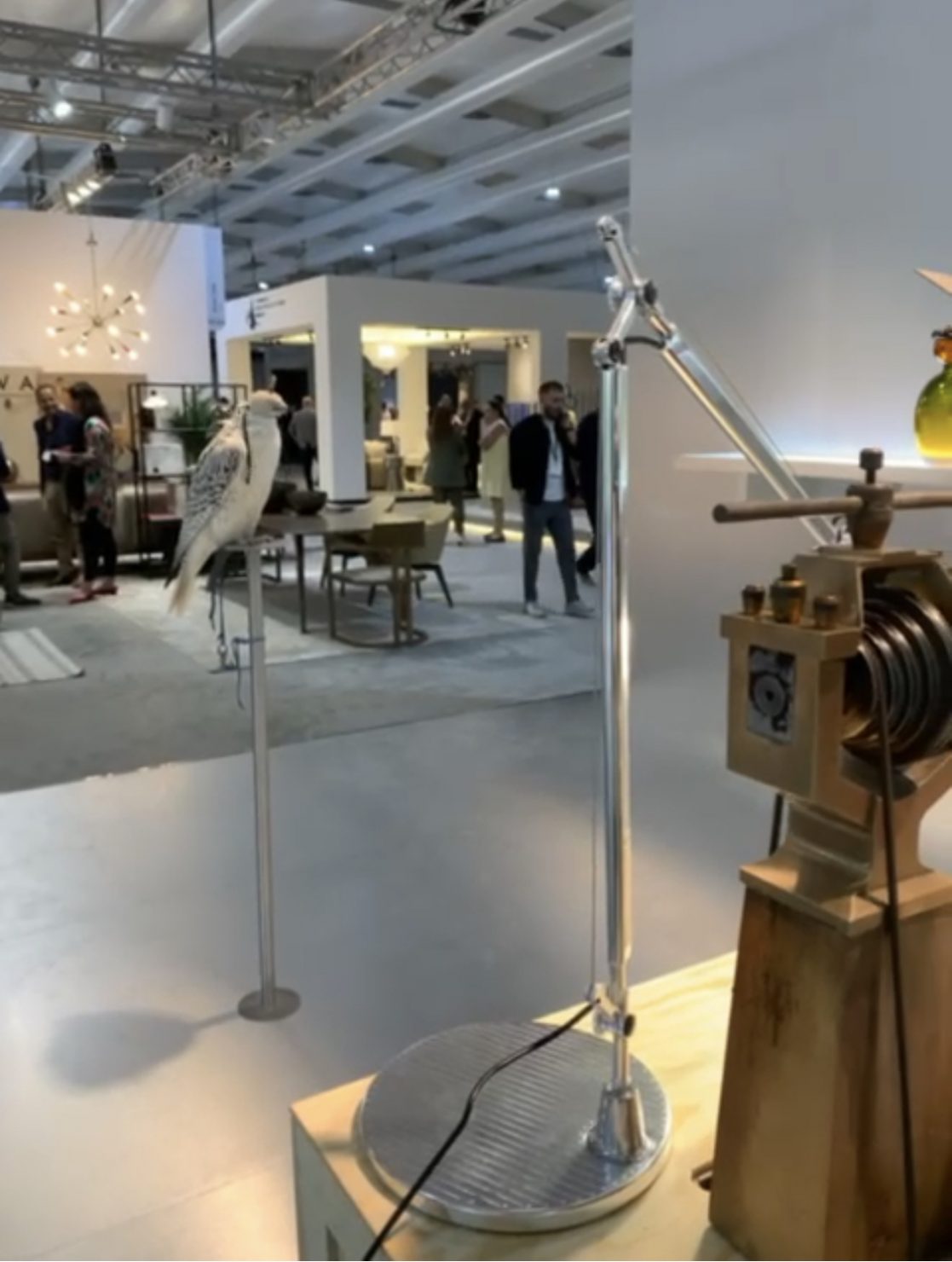
Lutron
Lutron presented ‘Prismatic’ – a cube that allows designers to experiment with light in the built environment. The immersive glass box, coated with dichroic film, allowed users to have full control over lighting scenes, setting different intensities and colour temperatures to dictate the atmosphere. All of this is done using the Lutron Lighting Designer app, this cloud based system is designed to make the commissioning process simple and flexible, all controlled with the swipe of a finger on an iPad.
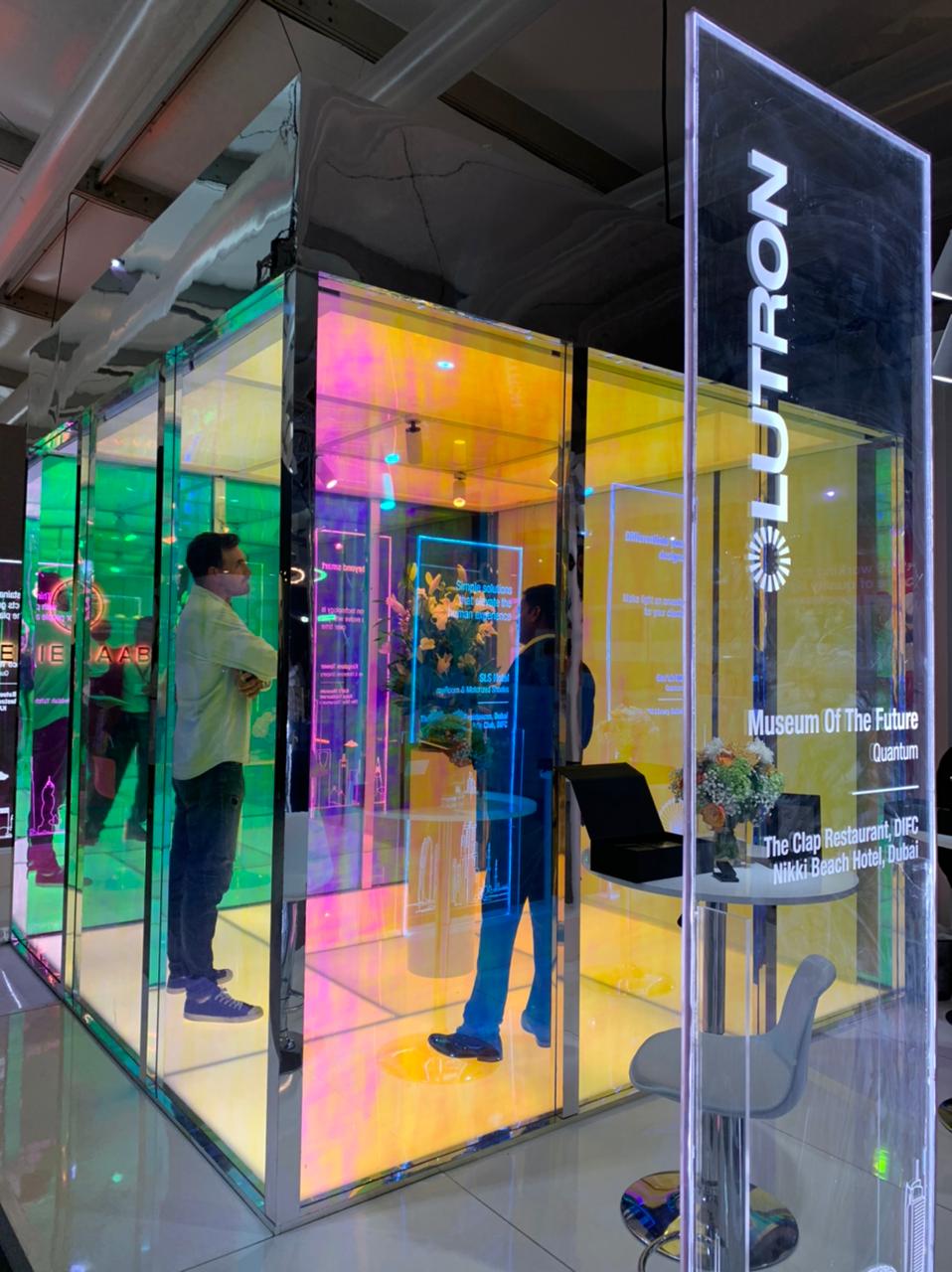
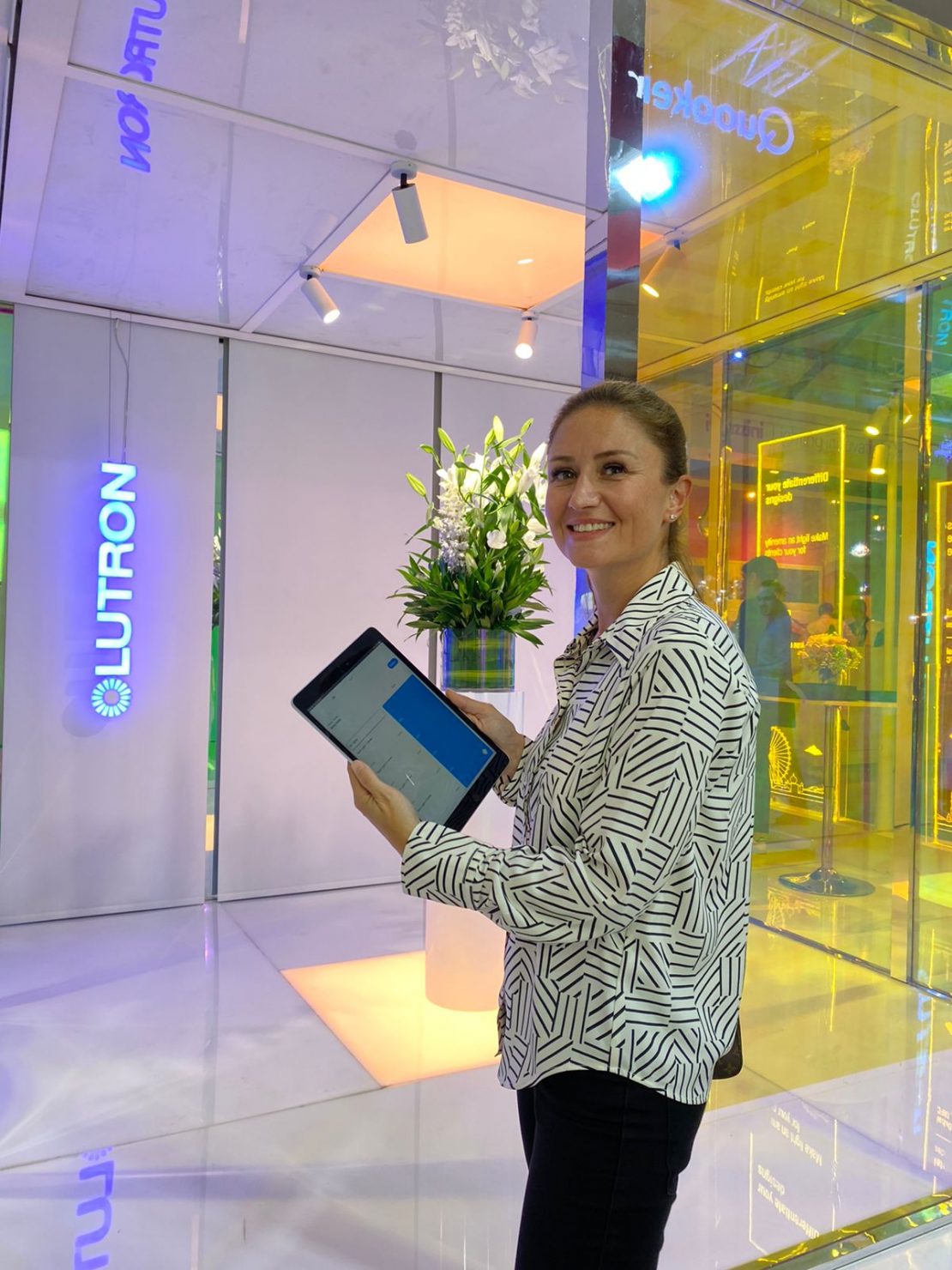
I have only mentioned four highlights above, but there were so many other stands, installations, talks and workshops that were equally inspiring. It really was an excellent comeback after the last few years and I’m already looking forward to what 2023 brings to the world of Dubai design.


